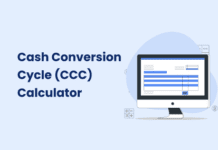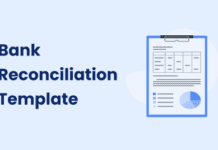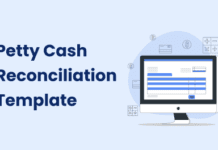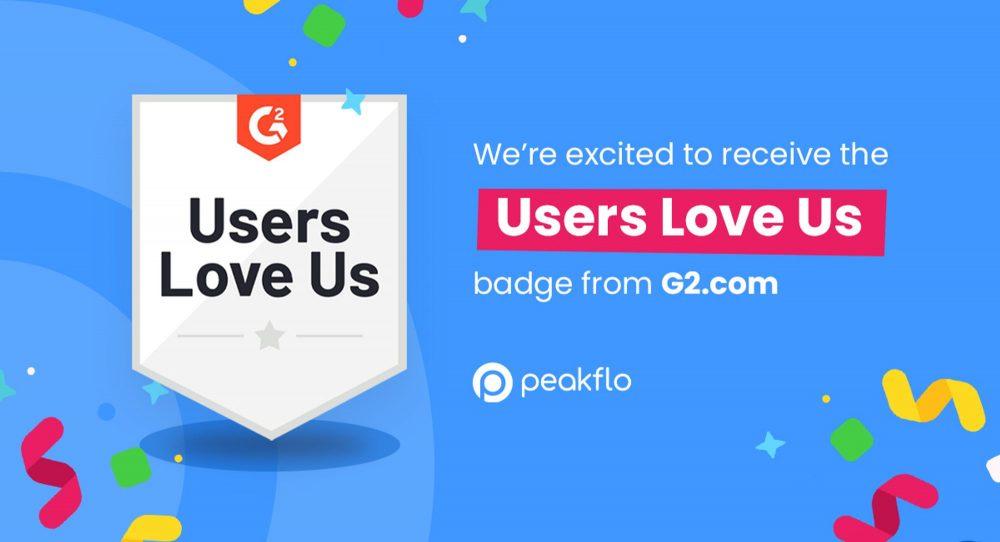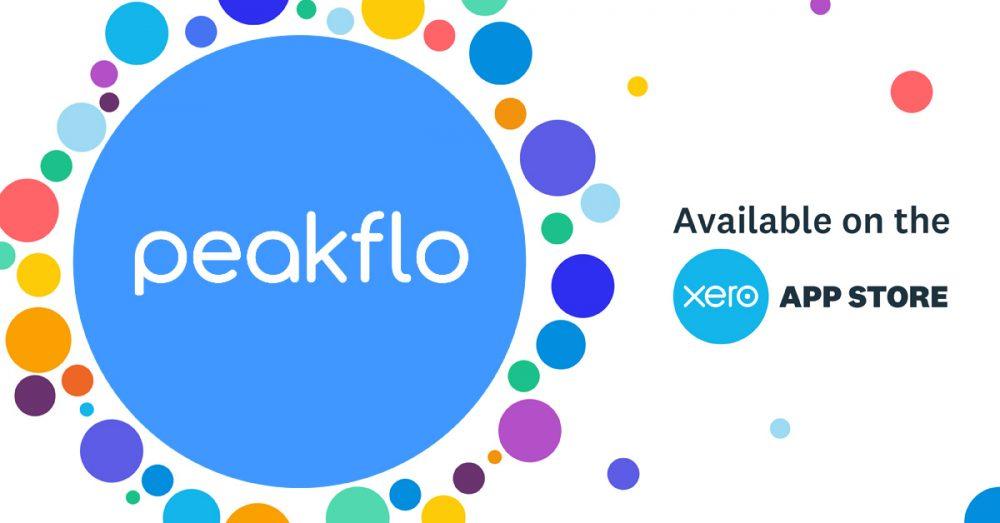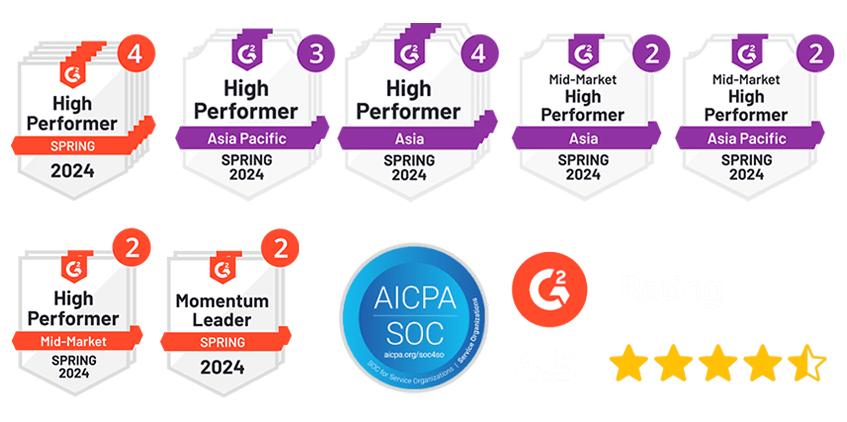Cold calling has become a numbers game that nobody wants to play. With success rates plummeting to just 2.3% across all industries, sales development representatives now face the reality of making roughly 50 calls just to secure a single meaningful conversation. This inefficiency creates a significant challenge for sales teams trying to hit their targets while managing increasingly complex prospect databases.
AI cold callers are changing this equation by automating the repetitive tasks that consume most of a salesperson’s day. Companies implementing these technologies report up to 50% increases in lead generation, appointment setting, and overall efficiency according to recent McKinsey research. The technology doesn’t replace human sales representatives—it frees them to focus on relationship building and closing deals, which explains why high-performing sales teams are 4.9 times more likely to use AI for sales calls than their struggling counterparts.
The timing couldn’t be better. With 65% of B2B organizations identifying improved sales productivity as one of their biggest challenges, conversational AI cold calling solutions offer a practical answer. These systems can handle thousands of simultaneous calls—something impossible for human agents—while providing consistent, personalized follow-ups that contribute directly to sales pipeline growth.
Understanding how AI makes traditional sales jobs easier requires looking at the technologies behind this shift and the practical steps for successful integration. This guide explores both aspects, offering insights into how you can implement these tools within your existing sales processes to achieve similar results.
The Shift from Traditional to AI-Enhanced Sales
Image Source: Gartner
Traditional cold calling methods are struggling to keep pace with modern buyer behavior. Sales teams relying on outdated approaches find themselves fighting an uphill battle against declining answer rates, sophisticated call-blocking technology, and increasingly research-savvy prospects who prefer to evaluate options independently.
What’s causing traditional cold calling to lose effectiveness?
The fundamental issue lies in the “spray-and-pray” approach that treats all prospects equally. Baylor University research shows that meaningful conversation rates from cold calls have dropped below 2%. This decline stems from several factors working against traditional methods:
Over 80% of cold calls never reach a human due to caller ID screening and call-blocking applications. Sales representatives now average 330 dials just to secure one appointment, creating a massive time drain that prevents teams from focusing on qualified opportunities.
Modern B2B buyers have also changed their purchasing behavior. They spend only 17% of their buying journey meeting with potential suppliers, preferring to conduct independent research first. This shift means that 74% of people actively ignore “salesy” outreach, making generic scripts and random dialing increasingly ineffective.
How is AI addressing these challenges?
AI-powered sales tools tackle the core problems by focusing on prospects most likely to convert rather than casting a wide net. These systems analyze digital footprints—monitoring search behavior, website interactions, and engagement patterns. Companies using AI for prospect targeting report conversion rate improvements of 30-50%.
The technology moves beyond guesswork by studying historical deal data to identify patterns that indicate buying readiness. Amazon demonstrates this power, generating 35% of its sales through AI-driven recommendations.
Key efficiency improvements include:
- Real-time alerts when leads visit pricing pages
- Automated scheduling and follow-ups
- Predictive dialing that reaches 10× more leads per hour than manual methods
What concerns do sales professionals have about AI?
Many sales representatives worry that AI will eliminate their jobs entirely. However, the reality differs significantly—AI handles repetitive administrative tasks while enabling humans to focus on relationship building and complex negotiations.
Trust remains a barrier, with only 28% of people expressing confidence in AI capabilities. Some organizations expect immediate results, but AI requires time to analyze data and identify meaningful patterns before delivering value.
The key insight is that AI cold calling technology aims to enhance rather than replace salespeople. These tools eliminate mundane tasks like data entry, scheduling follow-ups, and manual lead qualification, allowing sales teams to apply emotional intelligence where it matters most—building trust and closing deals.
With AI adoption projected to reach 60% by 2025, understanding how these tools complement human capabilities becomes essential for competitive sales organizations.
How AI Cold Callers Support Human Reps
Sales representatives spend approximately 70% of their time on non-selling tasks like manual data entry, lead prioritization, and administrative work. This creates a productivity bottleneck that AI cold callers are designed to eliminate. These tools don’t replace human sellers—they enhance their capabilities by handling the routine work that prevents reps from focusing on what matters most.
Reducing manual workload
The most immediate benefit of AI cold calling technology lies in automating repetitive, time-consuming tasks. AI-powered dialers can automatically:
- Handle the dialing process, connecting reps with live prospects as quickly as possible
- Display local area codes to increase answer rates
- Leave voicemails automatically when calls go unanswered
- Log call outcomes and generate detailed call summaries
Consider this: it takes sales reps about 7.5 hours to complete 209 cold calls, resulting in just one appointment or referral. AI outbound calling tools offer substantial relief by eliminating manual dialing, reducing idle time, and allowing reps to handle more calls in less time.
Freeing up time for relationship building
What happens when AI handles routine activities? Sales professionals can dedicate more time to:
- Building trust-based relationships with customers
- Serving as customer advocates
- Supporting clients through complex decisions
- Helping customers realize value from products or services
As one expert explains, “Salespeople should be able to focus on the areas that matter most, like high-touch online or in-person customer interactions, and account technology as an assistant to handle manual tasks”. Einstein Relationship Insights describes this shift as “a glimpse into the future of how humans will successfully work in tandem with AI”.
AI tools can save individual sales reps more than a dozen hours every week on manual prospecting and meeting preparation. This time savings allows them to become more strategic in their approach and more effective in their customer interactions.
Providing real-time insights and suggestions
The most powerful aspect of AI sales calls is the ability to provide guidance during live conversations. AI serves as a virtual assistant that supports reps throughout calls with:
- Real-time call guidance with dynamic scripts and next-best-action suggestions
- Instant knowledge retrieval about products or services relevant to the conversation
- Recommendations for handling objections effectively
- Sentiment analysis to help reps tailor their approach
Some AI cold calling tools can detect non-verbal cues and engagement patterns during conversations, helping reps understand what truly drives discussions. Others provide personalized coaching tips during live calls to help representatives refine their techniques.
AI continually analyzes seller activity, recognizing strengths and synthesizing best practices to provide constant coaching tailored to individual selling styles. This helps both new and experienced reps improve with each interaction.
Conversational AI cold calling tools work best when they augment human strengths—automating routine tasks and delivering actionable insights while preserving the essential rapport that human interaction brings to sales environments. The result is sales teams that become more strategic, empathetic, and effective in their roles.
How AI Cold Calling Enhances Lead Generation
AI cold calling technology extends far beyond automating conversations. One of its most valuable applications lies in how sales teams identify, evaluate, and prioritize potential customers. Companies using AI in their sales process see up to a 50% increase in lead conversion rates and significantly reduced time spent on unqualified calls.
1. AI-powered lead scoring and prioritization
Lead scoring has moved from guesswork to precision analytics. AI algorithms analyze vast datasets from past customers to determine which prospects are most likely to buy. The system evaluates historical data from both converted and non-converted leads to identify shared traits and patterns that indicate high conversion potential.
Predictive analytics form the backbone of this process, enabling AI to:
- Identify and prioritize high-potential leads based on their likelihood to convert
- Analyze customer data and behavior patterns to assess conversion probability
- Continuously refine scoring models as new data comes in, making them more accurate over time
98% of sales teams using AI report improved lead prioritization. This accuracy stems from AI’s ability to process multiple data sources simultaneously—including CRM data, website interactions, email engagement, and social media activity—creating a comprehensive view of each prospect.
The lead scoring process typically assigns a numerical value between 0 and 100, with higher scores representing better-qualified leads. This scoring system becomes increasingly precise as the AI learns from new outcomes, automatically adjusting when leads with certain attributes start converting at higher rates.
2. Intent detection and qualification
AI cold calling technologies excel at recognizing signals that indicate genuine buying intent. These systems can analyze customer conversations in real-time and gauge interest based on tone and responses.
Phone Intent Platforms use AI models trained on behavioral signals to score prospects based on true intent. These platforms flag when someone demonstrates “reachability signals,” allowing reps to reach out precisely when a conversation would be most welcomed.
Advanced systems triangulate telecom data, consumer behavior, and B2B attributes to answer critical questions:
- Is this the correct number for the person?
- Is this number active?
- Does this person typically answer unknown calls?
This information gets distilled into an actionable “High Intent” score that sales reps can use to prioritize their outreach efforts.
3. Real-time data analysis for better targeting
AI cold calling platforms provide immediate insights through continuous data monitoring. These systems analyze patterns from successful deals to better target prospects with similar characteristics.
Real-time targeting involves:
- Analyzing website visits, content downloads, and email engagement to understand lead intent
- Monitoring engagement frequency with specific content to identify genuinely interested leads
- Detecting changes in lead behavior, such as increased engagement or sudden disengagement
Data freshness makes a substantial difference in targeting accuracy. When a new visitor engages with your website, AI can promptly add them to a specific audience based on their behavior. This enables your team to respond to changes in lead interest immediately, increasing the likelihood of timely and successful interactions.
AI cold calling has changed lead generation from an educated guess into a data-driven science, making traditional sales jobs significantly more productive and targeted.
AI Technologies Powering Modern Sales Calls
Several core technologies work together to create the intelligent calling platforms that are changing how sales teams operate. Understanding these technologies helps explain why AI cold calling systems can enhance human capabilities so effectively.
1. Natural Language Processing (NLP)
NLP enables AI cold callers to understand and interpret human language during conversations. This technology bridges the communication gap between machines and humans by analyzing, understanding, and generating natural conversation. The process involves three key components:
1. Natural language understanding – Breaking down sentences and extracting meaning from text
2. Natural language generation – Creating coherent, contextually appropriate responses
3. Natural language interaction – Enabling seamless communication between humans and machines
Through sentiment analysis, NLP algorithms evaluate the tone of conversations, identify potential objections, and suggest appropriate responses in real-time. This capability helps sales representatives handle challenging situations more effectively. Currently, 47% of sales teams utilize NLP for call coaching to improve their performance in complex B2B conversations.
2. Machine Learning (ML)
Machine learning allows AI sales calls to continuously improve over time. ML systems learn from experience without explicit programming, analyzing past outcomes and the activities that led to them to help companies make better data-driven decisions.
For example, ML can determine the optimal time to send email sequences to leads by studying when prospects typically check their inbox. As the algorithm processes more data about your outreach efforts, its predictive capabilities improve, leading to better conversion rates.
3. Predictive analytics and lead scoring
Predictive analytics forms the foundation of modern lead scoring systems. These tools analyze large datasets to calculate scores for leads based on their likelihood to convert. If a model calculates a score of 80 for Lead A and 50 for Lead B, sales teams can predict that Lead A has greater conversion potential.
The effectiveness is clear: 98% believe it improves lead prioritization according to a survey of sales teams using AI. These systems automatically refresh scores (typically every 10 days) to incorporate emerging trends, ensuring sales teams work with current data.
4. Speech recognition and transcription
Speech recognition technology serves as the “listening” capability of AI systems, converting spoken language into text for further analysis. Modern speech recognition goes beyond simple transcription to provide:
- Analysis of call recordings to extract valuable data points like call duration and customer sentiment
- Pattern identification in customer behavior
- Real-time conversation transcription for immediate insights
These four technologies combine to create powerful AI cold calling solutions that streamline lead identification, prioritize outreach, and personalize conversations. The result is a system that supports human sales representatives rather than replacing them.
Real-World Use Cases of AI Cold Calling
Businesses implementing AI cold calling technologies report measurable improvements across their sales operations. The data reveals consistent patterns of enhanced productivity, better conversion rates, and improved customer experiences.
1. Improving SDR productivity
Sales Development Representatives traditionally spend over two-thirds of their time on non-selling tasks, creating bottlenecks that limit their ability to focus on qualified prospects. AI addresses these inefficiencies through targeted automation:
- AI SDRs handle 3-5x more conversations than human counterparts
- Dials increased by 76% when AI was implemented
- Sales teams save time through automated lead qualification
The technology works around the clock, managing thousands of calls simultaneously while human reps focus exclusively on high-value activities. One case study showed reps handling 20 qualified leads per day after implementation, dramatically improving productivity without increasing headcount.
2. Boosting conversion rates
Performance improvements from AI-driven sales processes show substantial gains. A leading software provider experienced a 35% increase in conversion rates after incorporating AI agents into their sales process. Similar results appear across different implementations:
- Marketing conversion rates are increasing by 9-20%
- Qualified opportunities growing by 50%
- Meetings booked are increasing 2.5x per rep
These improvements come from AI’s ability to analyze prospect data, identify buying signals, and deliver personalized messaging that resonates with each prospect’s specific needs and preferences.
3. Enhancing customer experience
AI enhances conversation quality beyond simple automation. Advanced sentiment analysis enables AI systems to understand and respond empathetically to caller emotions, adjusting approach based on frustration, excitement, or hesitation detected in the prospect’s voice.
The technology creates more meaningful interactions by analyzing factors like past purchases, interaction history, and browsing behavior. This personalization doesn’t just boost engagement—it creates genuine connections that feel valuable to prospects.
AI cold calling tools ensure every interaction aligns with customer expectations while reducing wait times and eliminating friction points. This balanced approach of efficiency and personalization explains why companies report customer satisfaction increasing by 25% after implementing AI-powered call systems.
How to Successfully Integrate AI into Your Sales Process
Successful integration of AI cold calling solutions requires strategic planning, not just technology adoption. Identify where these tools can deliver maximum impact before making implementation decisions.
1. Choosing the right tool for your team
Begin by mapping your current sales process to identify specific pain points where AI cold callers could make the biggest difference. Start with a narrow focus—addressing one or two high-impact areas rather than attempting to transform everything simultaneously. Evaluate tools based on must-have features like:
- CRM integration capabilities
- Conversation analysis accuracy
- Customizable workflows
- Performance analytics
Prioritize solutions that address your most significant challenges first. Automating mediocre processes only accelerates mediocre outcomes, so reimagine your workflows before implementation.
2. Training and onboarding your reps
Effective adoption hinges on proper training. Teams report 75% better coaching effectiveness when AI tools are properly implemented. Establish structured coaching workflows around AI insights and balance automated guidance with human expertise.
AI enables personalized training that adjusts to each rep’s role, experience, and learning style rather than one-size-fits-all approaches. Set up alerts when new reps use phrases like “I’ll check with my team” to identify coaching opportunities in real-time.
3. Tracking key metrics and iterating
Adopt a test-learn-iterate mindset for implementation success. Rapid proofs of concept help identify where value exists. Monitor key metrics including:
- Ramp time reduction
- Individual performance improvement
- Team win rate increases
- Sales cycle acceleration
Early successes often show 30% or better improvement in win rates. Regularly update your AI tools with new data to ensure they remain effective and accurate. This continuous improvement cycle, especially when backed by C-level sponsorship, drives lasting change in your sales process.
Peakflo AI Voice Agent: Supercharging Sales Outreach
Cold calling no longer has to be a numbers game. Peakflo’s AI Voice Agents take on the repetitive grind of dialing, leaving your sales team free to focus on what they do best—building relationships and closing deals. Unlike traditional dialers, our AI agents don’t just blast calls; they engage in natural, human-like conversations, qualify leads in real time, update CRM records instantly, and seamlessly schedule meetings for your reps.
This means no more wasting hours chasing unresponsive leads or logging call details manually. Instead, your reps receive a steady flow of warm, pre-qualified opportunities ready for meaningful conversations. With Peakflo AI Voice Agents managing the front end of the funnel, sales teams can handle more pipeline without increasing headcount, driving faster growth and higher conversion rates.
Want to see how Peakflo AI Voice Agents can transform your sales outreach? Book a call with our experts today.
Conclusion
AI cold calling technology has changed how sales teams approach one of their most challenging tasks. What was once a frustrating process with minimal returns has become a strategic advantage for teams willing to adopt these tools. The technology doesn’t replace human sales representatives—it handles the repetitive work while freeing professionals to focus on relationship building and deal closure.
Teams implementing AI-powered cold calling see up to 50% increases in lead generation and conversion rates. Sales representatives also reclaim hours previously spent on administrative tasks, redirecting that time toward high-value customer interactions and complex negotiations.
Cold calling doesn’t have to remain a numbers game with poor odds. AI solutions provide a practical path forward by automating routine tasks, offering real-time guidance during conversations, and delivering insights that make each interaction more purposeful. These systems analyze prospect behavior patterns to identify genuine buying signals and personalize outreach beyond human capabilities.
Your sales team faces a decision point. You can continue struggling with traditional cold calling’s declining effectiveness, or you can partner with AI to improve your outreach operations. AI cold callers aren’t replacing sales jobs—they’re making them more effective and satisfying.
FAQs
Q1. How does AI cold calling compare to traditional cold calling in terms of effectiveness?
AI cold calling has shown significant improvements over traditional methods, with some companies reporting up to 50% increases in lead generation and conversion rates. AI can handle a much higher volume of calls, provide consistent messaging, and use data-driven insights to target the most promising leads.
Q2. Will AI cold callers replace human sales representatives?
No, AI cold callers are not designed to replace human sales reps. Instead, they augment human capabilities by handling repetitive tasks, providing real-time insights, and freeing up time for sales professionals to focus on relationship building and closing deals.
Q3. What are the main benefits of integrating AI into the sales process?
Key benefits include increased productivity, improved lead qualification, enhanced personalization, real-time call guidance, and data-driven insights. AI can also reduce manual workload, allowing sales reps to focus on high-value activities.
Q4. How can sales teams successfully implement AI cold calling tools?
Successful implementation involves choosing the right tool for your specific needs, properly training your team, and continuously tracking key metrics. Start with focused applications addressing your biggest pain points, and adopt a test-learn-iterate mindset for continuous improvement.
Q5. What technologies power modern AI cold calling systems?
Modern AI cold calling systems leverage technologies such as Natural Language Processing (NLP), Machine Learning (ML), predictive analytics, and speech recognition. These work together to enable natural conversations, continuous learning, accurate lead scoring, and real-time transcription and analysis.









![Why AI Sales Calls Are Making Good Sales Reps Even Better [2025 Guide] ai sales calls](https://cdn-kmjmp.nitrocdn.com/YvtqmrsiHUxqerlSiZgbfzqqTARWTElr/assets/images/optimized/rev-834053b/blog.peakflo.co/wp-content/uploads/2025/09/65168cf6-3001-4733-8cbc-12d5684cf449-218x150.webp)










